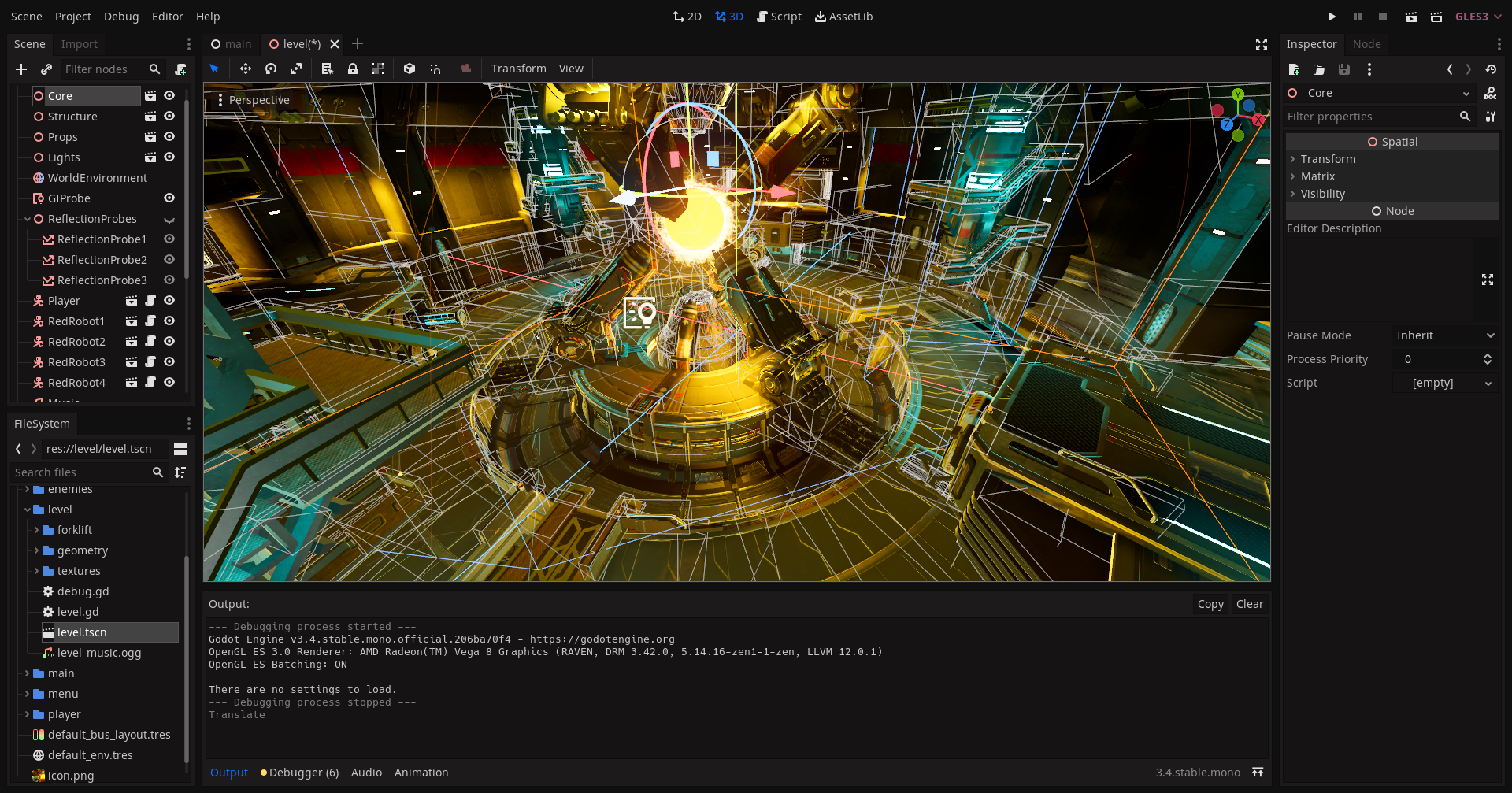10 Fun Facts About the Evolution of Video Game Graphics
The evolution of video game graphics is a testament to the relentless pursuit of technological advancement and artistic expression. From the pixelated simplicity of early arcade games to the hyper-realistic visuals of modern blockbusters, video game graphics have undergone a remarkable transformation over the years. This journey is not just about technological progress; it reflects changes in artistic vision, storytelling, and player engagement. Each leap in graphics technology has opened new avenues for creativity, allowing developers to create more immersive and emotionally resonant experiences. As we delve into the vibrant progression of video game graphics, we uncover a history rich with innovation, challenges, and triumphs that have shaped the gaming landscape into what it is today.
1. The Pixel Era: Simplicity Meets Creativity

The journey of video game graphics began in the pixel era, where simplicity met creativity in groundbreaking ways. Early video games like "Pong" and "Space Invaders" utilized basic pixel art to create engaging experiences despite their graphical limitations. These games relied on simple shapes and limited color palettes, yet they captivated audiences worldwide. The pixel era was defined by the ingenuity of developers who pushed the boundaries of what was possible with the technology of the time. This era laid the foundation for the future of gaming, proving that compelling gameplay and imaginative design could transcend graphical constraints.
Pixel art, with its distinctive charm, became a hallmark of early gaming. Developers used clever techniques to create the illusion of movement and depth, turning simple pixels into dynamic characters and environments. This era also saw the rise of iconic characters like Mario and Pac-Man, whose designs were dictated by the limitations of pixel art yet have endured as cultural icons. The pixel era demonstrated that graphics, no matter how basic, could evoke powerful emotions and create memorable experiences. This period set the stage for the subsequent evolution of video game graphics, highlighting the importance of creativity and innovation in the face of technological limitations.
2. The 8-Bit and 16-Bit Revolution: A Leap Forward

The transition from the pixel era to the 8-bit and 16-bit revolution marked a significant leap forward in video game graphics. This period, spanning the 1980s and early 1990s, saw the introduction of home consoles like the Nintendo Entertainment System (NES) and the Sega Genesis, which brought more sophisticated graphics to living rooms worldwide. The increased processing power of these systems allowed for more detailed sprites, richer color palettes, and smoother animations, enhancing the visual appeal of games. This era was characterized by a surge in creativity, as developers explored new genres and storytelling techniques made possible by improved graphics.
The 8-bit and 16-bit era also saw the emergence of iconic franchises such as "The Legend of Zelda," "Metroid," and "Sonic the Hedgehog." These games pushed the boundaries of what was possible with the available technology, utilizing innovative graphical techniques to create immersive worlds and memorable characters. The increased graphical fidelity allowed for more intricate level design and storytelling, drawing players deeper into the game worlds. This era demonstrated the power of graphics to enhance gameplay and narrative, setting the stage for further advancements in the industry. The 8-bit and 16-bit revolution was a pivotal moment in the history of video game graphics, showcasing the potential of technology to transform the gaming experience.
3. The 3D Revolution: A New Dimension

The advent of 3D graphics in the mid-1990s marked a revolutionary shift in video game design, introducing a new dimension to gaming experiences. With the release of consoles like the Sony PlayStation and the Nintendo 64, developers gained access to the technology needed to create fully 3D environments and characters. This transition from 2D to 3D graphics was not just a technical leap; it fundamentally changed how games were designed and played. The new dimension allowed for more complex and realistic worlds, offering players unprecedented levels of immersion and interactivity. The 3D revolution opened the door to new genres, such as first-person shooters and open-world adventures, which became staples of modern gaming.
The impact of 3D graphics on storytelling and gameplay was profound. Games like "Super Mario 64" and "Tomb Raider" introduced players to expansive 3D worlds that could be explored from multiple angles, offering a sense of freedom and discovery that was previously unattainable. The ability to create realistic characters and environments enhanced the emotional depth of games, allowing for more nuanced storytelling and character development. The 3D revolution also spurred advancements in rendering techniques, such as texture mapping and real-time lighting, which further enhanced the visual fidelity of games. This era marked a turning point in the evolution of video game graphics, setting the stage for future innovations and establishing 3D graphics as the industry standard.
4. The Rise of Realism: Graphics Meet Reality

As video game graphics continued to evolve, the pursuit of realism became a driving force in the industry. The early 2000s saw significant advancements in hardware and software, enabling developers to create games with unprecedented levels of detail and authenticity. The rise of realism in video game graphics was characterized by the use of advanced rendering techniques, such as bump mapping, dynamic lighting, and motion capture, which brought virtual worlds closer to reality. This era was marked by the release of games like "Half-Life 2" and "The Elder Scrolls IV: Oblivion," which showcased the potential of realistic graphics to enhance immersion and storytelling.
Realism in video games is not just about graphical fidelity; it also involves creating believable worlds and characters that resonate with players. The ability to render lifelike environments and human-like characters allowed developers to craft more engaging narratives and emotionally impactful experiences. Realistic graphics also expanded the audience for video games, attracting players who were drawn to the cinematic quality of modern titles. The pursuit of realism has continued to drive innovation in the industry, with developers constantly pushing the boundaries of what is possible with current technology. This era demonstrated the power of graphics to create compelling and immersive experiences that captivate players and elevate the art of storytelling in video games.
5. The Indie Renaissance: Artistry and Innovation

The indie game movement has played a significant role in the evolution of video game graphics, bringing artistry and innovation to the forefront. With the rise of digital distribution platforms like Steam and itch.io, independent developers gained the freedom to experiment with unique visual styles and artistic directions. The indie renaissance, which gained momentum in the late 2000s, has produced a diverse array of games that challenge traditional notions of graphics and gameplay. Indie developers often prioritize creativity and expression over photorealism, resulting in visually striking games that stand out in a crowded market.
Indie games like "Braid," "Limbo," and "Hollow Knight" have demonstrated the potential of unique art styles to enhance storytelling and gameplay. These games often use graphics to convey mood and atmosphere, creating immersive experiences that resonate with players on an emotional level. The indie movement has also embraced retro aesthetics, with many developers drawing inspiration from the pixel art and 8-bit graphics of earlier eras. This blending of old and new has resulted in a rich tapestry of visual styles that celebrate the history of video game graphics while pushing the medium forward. The indie renaissance has shown that innovation and artistry can thrive in the gaming industry, offering players fresh and exciting experiences that challenge the status quo.
6. The Role of Graphics Engines: Powering Creativity

Graphics engines have been instrumental in the evolution of video game graphics, providing developers with the tools needed to create visually stunning experiences. These engines, such as Unreal Engine, Unity, and CryEngine, offer a suite of features that streamline the development process and enhance graphical fidelity. The role of graphics engines in the industry cannot be overstated; they have democratized game development, allowing studios of all sizes to create high-quality games without the need for extensive technical resources. The use of graphics engines has accelerated the pace of innovation, enabling developers to focus on creativity and design rather than technical challenges.
Graphics engines have also played a crucial role in the pursuit of realism, providing advanced rendering techniques that bring virtual worlds to life. Features like real-time ray tracing, global illumination, and physics-based rendering have pushed the boundaries of what is possible with video game graphics. These engines have also facilitated the creation of expansive open worlds and complex simulations, offering players more immersive and dynamic experiences. The impact of graphics engines on the industry is profound, empowering developers to push the limits of creativity and deliver visually stunning games that captivate audiences worldwide. As technology continues to advance, graphics engines will remain at the forefront of innovation, driving the evolution of video game graphics into the future.
7. Virtual Reality: A New Frontier

Virtual reality (VR) represents a new frontier in the evolution of video game graphics, offering players an unprecedented level of immersion and interactivity. The advent of VR technology has opened up new possibilities for game design, allowing developers to create fully immersive experiences that transport players to virtual worlds. VR headsets like the Oculus Rift, HTC Vive, and PlayStation VR have brought this technology to the mainstream, providing players with a new way to interact with games. The impact of VR on video game graphics is significant, as it demands a high level of graphical fidelity and realism to create convincing virtual environments.
The challenges of developing for VR have pushed developers to innovate and experiment with new graphical techniques. The need for high frame rates and low latency has driven advancements in rendering and optimization, resulting in smoother and more responsive experiences. VR also emphasizes the importance of spatial audio and haptic feedback, enhancing the sense of presence and immersion. The potential of VR to revolutionize video game graphics is immense, offering players new ways to experience games and pushing the boundaries of what is possible with current technology. As VR continues to evolve, it will undoubtedly play a key role in shaping the future of video game graphics, offering players even more immersive and engaging experiences.
8. The Impact of AI on Graphics: Intelligent Design

Artificial intelligence (AI) is increasingly playing a role in the evolution of video game graphics, offering new tools and techniques for developers to create more realistic and dynamic experiences. AI-driven technologies, such as procedural generation and machine learning, are revolutionizing the way games are designed and rendered. These technologies allow for the creation of vast, detailed worlds with minimal manual input, enabling developers to focus on creativity and storytelling. The impact of AI on video game graphics is profound, offering new possibilities for innovation and pushing the boundaries of what is possible with current technology.
AI is also being used to enhance the realism of characters and environments, creating more lifelike and believable experiences. Techniques such as neural rendering and AI-driven animation are being used to create realistic facial expressions and movements, enhancing the emotional depth of games. AI is also playing a role in optimizing graphics performance, allowing for more efficient rendering and improved visual fidelity. The potential of AI to transform video game graphics is immense, offering developers new tools to create more immersive and engaging experiences. As AI technology continues to advance, it will undoubtedly play a key role in shaping the future of video game graphics, offering new possibilities for creativity and innovation.
9. The Role of Community: Modding and Customization

The role of the gaming community in the evolution of video game graphics cannot be understated. Modding and customization have allowed players to take an active role in shaping the visual experience of games, offering new possibilities for creativity and expression. The modding community has been a driving force behind the evolution of video game graphics, pushing the boundaries of what is possible with existing technology. Games like "The Elder Scrolls V: Skyrim" and "Grand Theft Auto V" have thriving modding communities that have created a wealth of custom content, from new textures and models to complete visual overhauls.
Modding has also played a role in preserving the legacy of older games, allowing players to update graphics and bring classic titles into the modern era. The ability to customize and enhance graphics has extended the lifespan of many games, keeping them relevant and engaging for new audiences. The role of the community in the evolution of video game graphics is a testament to the power of collaboration and creativity, offering new possibilities for innovation and expression. As technology continues to advance, the modding community will undoubtedly play a key role in shaping the future of video game graphics, offering new possibilities for creativity and expression.
10. The Future of Graphics: Beyond Reality

As we look to the future, the evolution of video game graphics shows no signs of slowing down. The pursuit of realism and immersion will continue to drive innovation, with developers exploring new technologies and techniques to push the boundaries of what is possible. The future of video game graphics will likely be defined by advancements in rendering, AI, and virtual reality, offering new possibilities for creativity and expression. The potential of these technologies to create more immersive and engaging experiences is immense, offering players new ways to interact with games and pushing the boundaries of what is possible with current technology.
The future of video game graphics is not just about realism; it is also about expanding the possibilities of what games can be. Developers will continue to experiment with unique art styles and visual effects, offering players fresh and exciting experiences that challenge traditional notions of graphics and gameplay. The potential of video game graphics to create compelling and immersive experiences is immense, offering new possibilities for creativity and expression. As technology continues to advance, the evolution of video game graphics will undoubtedly continue to captivate players and shape the future of gaming.







